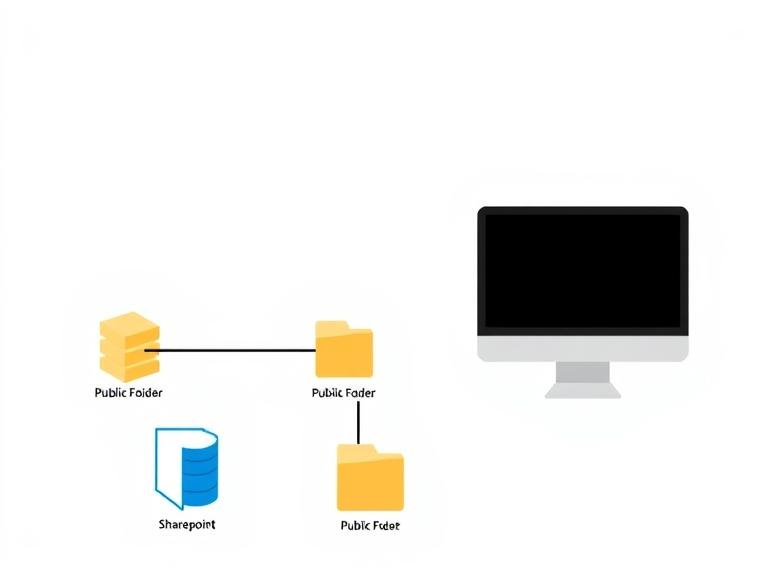Building finance-grade mobile applications demands an uncompromising commitment to security. Unlike typical consumer apps, FinTech solutions handle highly sensitive personal and financial data, making them prime targets for cyberattacks. A single breach can lead to devastating financial losses, severe reputational damage, and significant regulatory penalties. Therefore, simply having “good” security isn’t enough; apps operating in the financial sector must adhere to robust, internationally recognized security frameworks that provide a structured approach to risk management and compliance. For any Mobile App Development USA company venturing into FinTech, understanding and meticulously implementing these frameworks is fundamental to delivering trustworthy and legally compliant products.
These frameworks enhance the security posture of mobile apps by providing comprehensive guidelines that cover various aspects of the software development lifecycle, from initial design to deployment and ongoing maintenance. They ensure that security is not an afterthought but is intrinsically woven into every layer of the application.
Here are 6 top security frameworks for building finance-grade apps:
1. OWASP Mobile Security Project (MASVS & Mobile Top 10)
The Open Web Application Security Project (OWASP) is a non-profit foundation focused on improving software security. Its mobile security project offers invaluable resources specifically tailored for mobile applications.
How it enhances security:
- OWASP Mobile Application Security Verification Standard (MASVS): MASVS provides a baseline for security requirements and testing of mobile applications. It defines three levels of security, allowing developers to target appropriate rigor based on the app’s sensitivity (e.g., a finance app would typically aim for MASVS Level 2 or 3). It covers areas like data storage, cryptography, authentication, network communication, and code quality. By following MASVS, a Mobile App Development USA team ensures a structured approach to securing their application from common vulnerabilities.
- OWASP Mobile Top 10: This widely recognized list highlights the ten most critical security risks facing mobile applications. Regularly updated, it acts as a crucial checklist for developers to prioritize their security efforts, focusing on common pitfalls like insecure data storage, insecure communication, and improper authentication. For FinTech apps, addressing every item on this list is non-negotiable.
- Comprehensive Testing Guidance: OWASP also provides a Mobile Security Testing Guide (MSTG), which offers detailed instructions for conducting security tests, including penetration testing and vulnerability assessments, ensuring that implemented security controls are effective.
2. Payment Card Industry Data Security Standard (PCI DSS)
PCI DSS is a global information security standard specifically designed to protect cardholder data. Any organization that processes, stores, or transmits credit card information must comply with PCI DSS.
How it enhances security:
- Cardholder Data Protection: PCI DSS mandates specific controls around the security of cardholder data environments (CDE). For mobile apps, this means rigorous requirements for how payment card data is collected, transmitted, processed, and stored on the device and backend.
- Encryption and Tokenization: The framework heavily emphasizes strong encryption for data in transit and at rest, and recommends tokenization (replacing sensitive card data with unique non-sensitive identifiers) to minimize the exposure of actual card numbers. This reduces the scope of compliance and the risk of data breaches.
- Network Security: It includes requirements for firewalls, secure network configurations, and regular vulnerability scanning to protect the infrastructure supporting payment processing.
- Access Control & Monitoring: PCI DSS mandates strict access controls to cardholder data and robust logging and monitoring of all access and activities within the CDE, ensuring accountability and early detection of suspicious behavior. A Mobile App Development USA team building payment functionality must ensure their solutions adhere strictly to these guidelines.
3. NIST Cybersecurity Framework (CSF)
Developed by the National Institute of Standards and Technology (NIST), the Cybersecurity Framework provides a comprehensive, risk-based approach to managing and improving cybersecurity. While not specific to mobile, its principles are highly applicable to finance-grade apps.
How it enhances security:
- Five Core Functions: The framework is structured around five core functions: Identify, Protect, Detect, Respond, and Recover. Applying these to mobile app development means:
- Identify: Understanding all assets (data, code, infrastructure) and potential risks in the mobile ecosystem.
- Protect: Implementing safeguards like encryption, access controls, and secure coding practices.
- Detect: Establishing systems for continuous monitoring and anomaly detection.
- Respond: Having a robust incident response plan for security breaches.
- Recover: Implementing data backup and recovery strategies to restore services.
- Risk Management Focus: NIST CSF encourages organizations to assess their unique cybersecurity risks and then select controls that align with their risk tolerance and business objectives. This flexibility allows a Mobile App Development USA team to tailor their security efforts effectively.
- Adaptability: Its high-level, adaptable nature makes it suitable for integrating with other frameworks and for organizations of various sizes and complexities, including FinTech startups and large financial institutions.
4. ISO 27001 (Information Security Management System – ISMS)
ISO 27001 is an international standard that provides a framework for an Information Security Management System (ISMS). Achieving ISO 27001 certification demonstrates that an organization has established a systematic and comprehensive approach to managing its sensitive information.
How it enhances security:
- Holistic Security Management: ISO 27001 goes beyond technical controls, covering organizational security, human resources security, physical security, and legal compliance. For FinTech apps, this means not just secure code, but also secure development environments, secure data centers, and security-aware employees.
- Risk Assessment and Treatment: The standard requires organizations to identify, assess, and treat information security risks. This proactive approach ensures that vulnerabilities specific to mobile FinTech operations are systematically addressed.
- Continuous Improvement: ISO 27001 mandates a “Plan-Do-Check-Act” (PDCA) cycle, promoting continuous improvement of the ISMS. This ensures that security measures evolve with emerging threats and changes in the mobile app environment.
- Trust and Assurance: Certification demonstrates a commitment to information security, building trust with users, partners, and regulators—a significant competitive advantage for a Mobile App Development USA company specializing in financial services.
5. Open Banking Security Standards (e.g., FAPI, OAuth 2.0/OIDC)
With the rise of Open Banking, applications often need to securely connect with various financial institutions via APIs. Specific security standards govern these interactions to ensure data privacy and integrity.
How it enhances security:
- API Security: Standards like the Financial-grade API (FAPI) ensure that APIs used for Open Banking are highly secure, utilizing robust authorization protocols (e.g., OAuth 2.0 with strong authentication mechanisms like OpenID Connect – OIDC) and strong encryption (Mutual TLS).
- Strong Customer Authentication (SCA): These frameworks mandate strong authentication methods, often multi-factor, for accessing financial data or initiating payments through third-party apps, significantly reducing the risk of fraud.
- Consent Management: They enforce granular user consent mechanisms, ensuring that users explicitly control which data is shared and for what purpose, and can revoke consent at any time. This aligns perfectly with privacy-first principles essential for FinTech.
- Interoperability & Trust: Adhering to these specific standards ensures secure and trusted interoperability between FinTech apps and banking systems, which is crucial for the functionality and reliability of modern financial services.
6. CIS Controls (Center for Internet Security Critical Security Controls)
The CIS Controls are a prioritized set of cybersecurity best practices developed by a global community of experts. They offer a concise and actionable list of controls to defend against common cyberattacks.
How it enhances security:
- Prioritized Action: Unlike broader frameworks, CIS Controls provide a clear, prioritized list of actions (e.g., Inventory and Control of Hardware Assets, Secure Configuration of Enterprise Assets) that can be implemented to significantly improve an organization’s cybersecurity posture.
- Focus on Foundational Security: Many of the controls are foundational, such as secure configurations for mobile devices, continuous vulnerability management, and robust audit log management – all directly applicable to securing a mobile app and its underlying infrastructure.
- Automated Verification: The CIS Controls emphasize automation where possible, making it easier for a Mobile App Development USA team to integrate security checks and compliance verification into their CI/CD pipelines.
- Defense in Depth: Implementing these controls helps establish multiple layers of defense, significantly raising the bar for attackers trying to compromise financial applications.
Conclusion
For any Mobile App Development USA firm creating finance-grade applications, security is not just a feature; it is the product’s very foundation and the bedrock of user trust. By rigorously adopting and integrating robust security frameworks such as OWASP’s guidelines, PCI DSS, NIST CSF, ISO 27001, Open Banking security standards, and the CIS Controls, developers can build FinTech apps that are not only compliant with stringent regulations but also resilient against evolving cyber threats. These frameworks provide the comprehensive, structured, and continuously improving approach necessary to protect sensitive financial data, mitigate risks, and ensure the long-term success and reputation of financial mobile applications. The investment in robust security is an investment in consumer confidence and market leadership. Sources













Leave a Reply